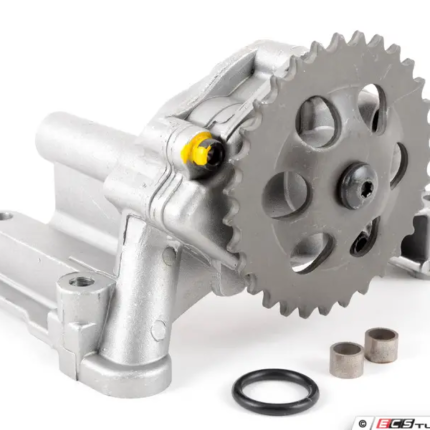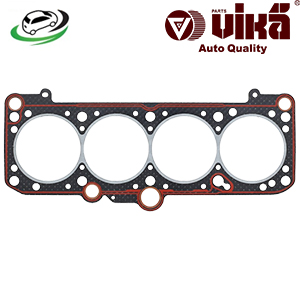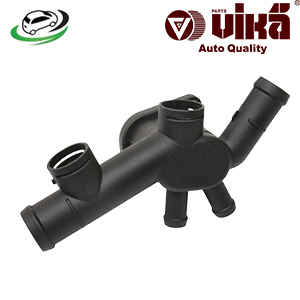-20%
Get Coolant Hose Flange Volkswagen New Beetle 2.0 06A121132C
The coolant hose flange is a crucial component in a vehicle’s cooling system, helping to manage the flow of coolant and maintain the engine’s optimal temperature. Here’s a detailed yet simple explanation of what it is, how it works, and why it’s important.
What is a Coolant Hose Flange?
A coolant hose flange is a metal or plastic fitting that connects a coolant hose to various parts of the engine or cooling system. It typically features a flat surface with bolt holes or clamps that secure the hose and flange to the engine block, cylinder head, or radiator. The flange is designed to provide a leak-proof connection and ensure that coolant flows properly through the system.
How Does the Coolant Hose Flange Work?
The coolant hose flange operates in the following way:
- Connecting Hoses: The flange provides a secure connection point for the coolant hoses. These hoses transport coolant between the engine, radiator, and other parts of the cooling system.
- Sealing: The flange includes a gasket or O-ring that seals the connection between the hose and the engine or radiator. This seal prevents coolant from leaking out of the system.
- Directing Coolant Flow: By securing the hose in place, the flange helps direct the flow of coolant through the engine and cooling system. This ensures that coolant circulates efficiently and maintains the engine’s optimal temperature.
Why is the Coolant Hose Flange Important?
The coolant hose flange is important for several reasons:
- Prevents Coolant Leaks: The flange’s seal helps prevent coolant from leaking out of the system. Coolant leaks can lead to engine overheating and potential damage.
- Ensures Proper Coolant Flow: By providing a secure connection for the hoses, the flange ensures that coolant flows properly through the engine and cooling system. This helps maintain the engine’s operating temperature and prevents overheating.
- Supports Engine Performance: Proper coolant flow is essential for engine performance. The flange helps ensure that the engine operates efficiently and reliably by maintaining adequate cooling.
- Protects Engine Components: By preventing leaks and ensuring proper coolant flow, the flange helps protect engine components from damage caused by overheating or inadequate lubrication.
Signs of a Failing Coolant Hose Flange
A failing coolant hose flange can lead to various issues. Here are some common signs of a problem:
- Coolant Leaks: One of the most obvious signs of a failing flange is coolant leaking around the connection point. You might notice puddles of coolant under the vehicle or see coolant dripping from the flange area.
- Overheating Engine: If the flange is not sealing properly, coolant may not flow efficiently, leading to engine overheating. An overheating engine can cause serious damage if not addressed promptly.
- Low Coolant Levels: Frequent drops in coolant levels can indicate a leak in the cooling system. A failing flange can cause coolant to leak out, leading to low coolant levels.
- Visible Damage: Inspecting the flange might reveal visible damage, such as cracks, corrosion, or a worn-out gasket. These issues can affect the flange’s ability to seal properly.
Maintaining the Coolant Hose Flange
To keep the coolant hose flange in good condition, follow these maintenance tips:
- Regular Inspections: Periodically check the coolant hose flange for signs of leaks, damage, or wear. Early detection of issues can help prevent more significant problems.
- Check for Leaks: Inspect the area around the flange for coolant leaks. Address any leaks promptly to prevent engine overheating and damage.
- Replace Gaskets or O-Rings: If the gasket or O-ring on the flange becomes worn or damaged, replace it to maintain a proper seal. This helps prevent coolant leaks and ensures efficient cooling.
- Keep Hoses in Good Condition: Ensure that the coolant hoses connected to the flange are in good condition and securely fastened. Damaged or loose hoses can affect the flange’s performance and lead to leaks.
Replacing the Coolant Hose Flange
If the coolant hose flange fails or shows signs of significant wear, it’s important to replace it. Here’s a general guide to the replacement process:
- Preparation: Gather the necessary tools and a new coolant hose flange. Ensure the engine is cool and secure the vehicle on a flat surface.
- Drain the Coolant: Before removing the flange, drain the coolant from the cooling system. This prevents spills and makes it easier to work on the flange.
- Remove the Old Flange: Unbolt or unclamp the old flange from the engine or radiator. Be prepared for some coolant to spill out during this process. Remove any old gasket or sealant from the flange area.
- Install the New Flange: Position the new coolant hose flange in place and secure it with bolts or clamps. Ensure the gasket or O-ring is properly aligned to provide a good seal.
- Reconnect the Hoses: Attach the coolant hoses to the new flange and secure them with clamps or fittings. Ensure that the hoses are properly connected and tightened.
- Refill the Coolant: Refill the cooling system with the appropriate type and amount of coolant. Check for any signs of leaks around the flange and hose connections.
- Check for Leaks: Start the engine and let it reach operating temperature. Check the area around the new flange for leaks and ensure that the cooling system is functioning properly.
Follow us on Facebook for more parts.



